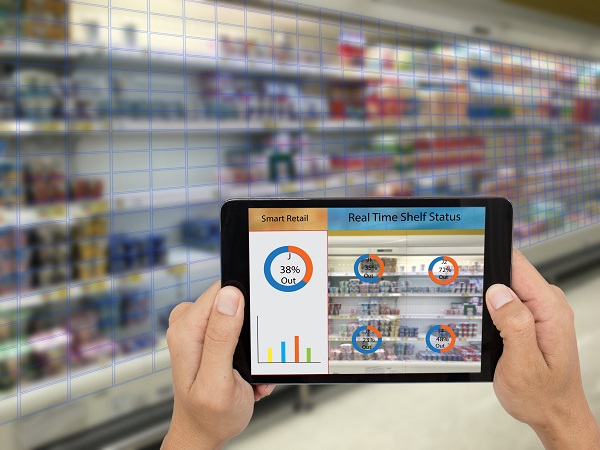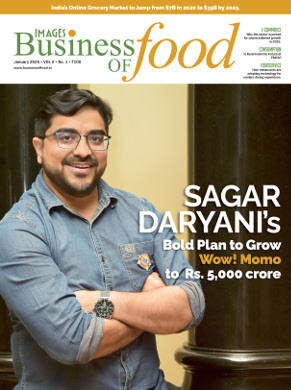The advanced age of retailing in the form of modern retail outlets is adding to the strategic complexities of the consumer packaged goods brands but the market is being reset with more advanced intelligent technologies that can boost modern retail sales for consumer brands.
When a customer looks at the shelf in a retail outlet, say for buying a beverage, what is the first brand they see and pick to buy. This is where technology is making all the difference for consumer brands placed on that shelf inside the modern outlet.
While shopping is a pleasure for many consumers out there, it is a strategic battleground for consumer brands. The advanced age of retailing
in the form of modern retail outlets is only adding to the strategic complexities of the consumer packaged goods (CPG) brands. There are over twenty-two thousand modern retail grocery outlets approximately totaling to a market size of $20 billion. That means the potential is too high to miss. For years, technology has been helping consumer brands ace the traditional retail game with intuitive selling abilities and deep analytics in real-time.
Now, the market is being reset with more advanced intelligent technologies that can boost modern retail sales for consumer brands. Here, the vision of CPG brands plays a vital role.
In local kirana stores, shop spaces are relatively smaller, making it slightly complicated for consumers to locate the product effectively. The retailer therefore dons the hat of an influencer, impacting consumer purchase decisions. Brands have numerous strategies from discounts to complementary products to ensure the influencer works in their favor.
But when it comes to modern retail outlets, consumers are largely on their own, visiting aisles one after the other to locate specific products and respective brands on their shopping list.
This poses some big questions for consumer brands. First, who would influence consumer purchase decisions in a modern retail outlet? Second, how can they ensure the promotions are running effectively? Third, how to measure return on investment in promotions and marketing campaigns? Fourth, how to measure the share of the shelf in comparison to the competitors, because placement of a product on the shelf plays a key role in the buying decision. Fifth, in cases where brands have their dedicated store executives in the modern retail outlet, how to measure their performance and efficiency?
Such a big list of questions would make many believe only a complicated process or technology would be the apt solution. That’s where things take an interesting turn.
A simple answer to all these questions is a complete, 360-degree visibility provided by technology. For managers and leaders spending man-hours and money in formulating and executing strategies, this complete visibility of the ground, including share of shelf, ROI, performance and other things in real-time changes the game.
What amplifies it further is quick analytical abilities to calculate in entirety and make sense of all the ground level visibility in real-time.
Take a Food and Beverage brand for example with a presence in 137 modern retail outlets in Delhi. Every day, 20 executives visit some of these outlets as per the plan while 42 executives are aligned to individual stores.
Recently, the brand spent INR 5 lakh in a city-wide promotion, placing floor stacking units, danglers, angular shelf sticks among other things in the outlets. Imagine the complexities of managing the staff, measuring the
ROI and ensuring that the stock is always available for sale. But thanks to technology, this brand could smartly negotiate through all the challenges. Each of its executives has an application, aka a mobilized retail execution solution for recording and reporting activities, from daily stock to promotions, share of shelf to customer interaction. Everything is duly recorded, including their own performance against the set KPIs. One may think that would consume all of their time. And that’s where the best part comes. It only takes minutes.
With AI-powered image recognition technology, the executives capture the exact share of the shelf in comparison to the competition, get automatic real-time analysis and store-check results — all within minutes. They even capture the pictures of promotional placement to ensure planogram adherence, bringing complete ground visibility to their regional head. This cumulative data from each store, including the sales calculated from daily stock movement, topped with real-time insight helps the Regional Head draft revival or acceleration strategies, as needed, in minimal time and initiate a spike in the share of shelf with an eye-to-hip level placement of the product for higher sales.
In the CPG industry, this kind of instant data is a goldmine for leaders who are using it to immediately plan their pricing strategy, target consumers with promotions and right communications, and drive shelf appeal. New technologies including artificial intelligence and image recognition are the answer to the poor retail executions witnessed earlier, and even today where technology adoption is minimal. It has been, and in many cases it still is, a major reason why many consumer packaged goods brands were and are struggling
The writer is CEO, FieldAssist, a SaaS based technology platform transforming route-to-market capabilities of CPG companies across the value-chain. Headquartered in Gurugram, India, and with clients in 10 countries in Asia and Africa, FieldAssist is a ‘Proud Partner to Great Brands’ delivering ready insights and powering GTM strategies for 550+ CPG brands.



